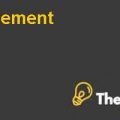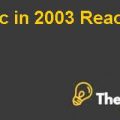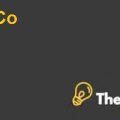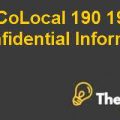
Working Capital Management
Effects of Working Capital Management of SME Profitability
Abstract
The objective of this research is to determine the effect of working capital management on the long term profitability of the small and medium sized enterprises. Initially, the corporate finance focuses on corporate decisions of the organization by considering its strong focus on capital structure, dividends and company’s valuation but later on, organizations find that the short term resources have also substantial impact on the firm’s profitability and risk, which increases the need for its consideration.
Working capital mainly includes the items that are short term in nature and are used to operate day to day activities, so that firms can effectively manage its operations. Further, another objective of the effective working capital management is to tie up less money in working capital and to invest extra cash in activities to generate higher returns (Juan, 2007).
Working capital plays an important role in the operations of the company and it has a significant impact on the company’s profitability and on the liquidity position of the company. Working capital includes investments in current assets, such as; inventories, receivables, market securities and it also includes the short term obligations of the business, which includes creditors, short term obligations, etc.
Introduction
Working capital plays a very vital role in financial management, which involves the composition and financing of the current assets. Current assets are those that are readily convertible into cash, usually within one year. The objective of the organization is to maximize its profits but on the other hand, stabilizing the liquidity of the firm is another objective, so increasing returns at the cost of the liquidity may raise severe problems. Therefore, the organization shall consider to manage its both objectives so as to maximize the value of the firm (Juan, 2007).
Working capital management is important due to its significant impact on the profitability and risk. Maintaining high inventory will reduce the possibility of uncertainties in the production process, protect against adverse fluctuations in prices, reduce supply cost but on the other hand, granting a credit to customers at the time of low demand will be an effective management strategy. However, if the company invests significantly in inventory and grants humble discounts to its customers then the company will be less susceptible to risk but at the cost of the long term profitability (Juan, 2007).
On the other hand, obtaining discounts from suppliers is an effective strategy in working capital management but sometimes the discounts from suppliers may require high implicit costs, which threaten the long term benefits of the organization. Therefore, a strategic decision will be required to decide how much to invest in inventory and customers and how much credit will be accepted from supplier. It can be determined from the cash conversion cycle of the organization, which determines the average number of days required to be pay-off suppliers and average number of days required for collection from customers (Dong, 2010).
Some of the researches have concluded that there is an inverse relation between the cash conversion cycle and the profitability of the company. Results of the studies show that a reduction in cash conversion cycle to some extent will increase the profitability of the company. Firms believe that they can increase the profitability of the company by reducing the number of outstanding days on receivables and inventories and increasing the number of payment days to suppliers.
Effective management of working capital is particularly very important for small and medium sized organizations because they have relatively low cash in house and they can’t afford to finance its working capital through external finance because it will increase the cost of the organization, hence deteriorating its long term benefits (Amarjit and Nahum, 2010).
Case Analysis
In order to determine the effect of working capital on small and medium sized organization, a Cash Conversion Cycle (CCC) has been considered to determine the net working capital. It has been calculated by determining the average receivables period, which determines the average number of days that will be required to convert its debt. An average inventory period determines the average number of days that will be required to convert the inventory into cash. Further, CCC also calculates a payables period, which determines the average number of days that will be required to settle its creditors (Amarjit and Nahum, 2010).
An organization’s return on investment is substantially been affected when the organization grants substantial time to customers to make their payments. Although, granting more period to customers will increase sales but on the other hand, there are also some disadvantages as well, i.e.; delaying payment from customers may threaten its recovery. Thus, a more restrictive policy to make readable payments to the company will improve the organization’s performance.
It has also been argued that when the inventory is immediately convertible into cash then it will also improve the profitability of the organization ......................
This is just a sample partial case solution. Please place the order on the website to order your own originally done case solution.












